https://www.youtube.com/watch?v=5Lw6GniCkUk
The 6x6 Rubik's Cube Should NOT Be Possible
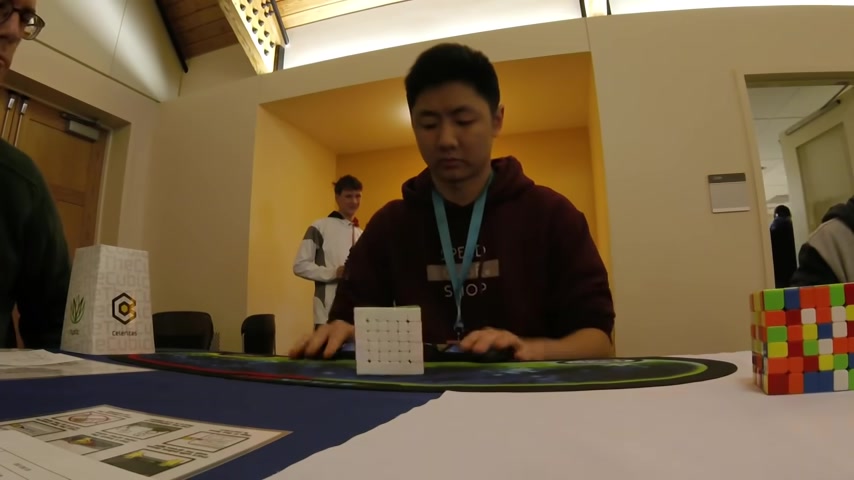
This is the six by six version of the Rubik's cube .
This is an event held at official competitions and there are world records for it .
Speed cubing design has come such a long way that this cube can turn nearly as fast as the best three by three cubes .
But there is one problem .
The six by six Rubik's cube should not be possible .
Rubik's cubes come in many different shapes and sizes but the original three by three was released in 1980 .
The four by four came out in 1981 .
Interestingly not actually invented by Erno Rubik but still named the Rubik's Revenge because marketing and similar story for the 555 which came out in 1983 .
So when do you think the first six by six was made ?
Was it here ?
Hm Keep going , keep going .
In 2008 V cube came out with the V cube six ?
OK .
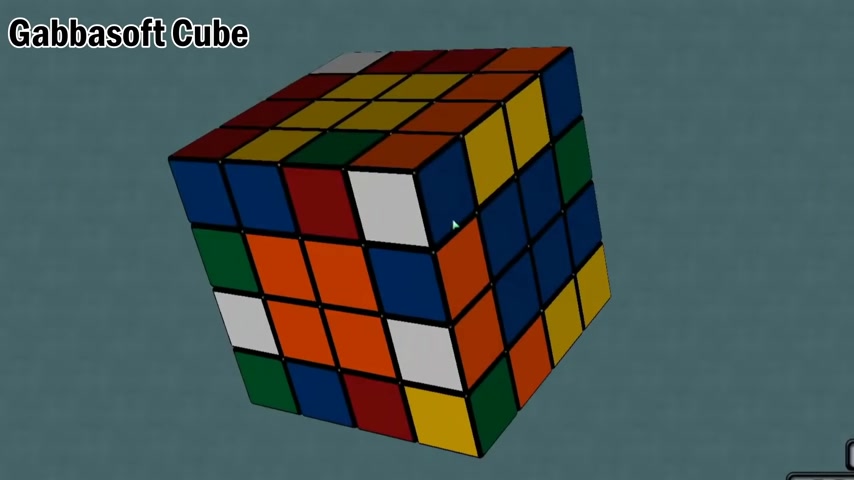
Enough of that before the six by six cube mechanism was invented , the only way to actually solve one was to use a Rubik's cube simulator on the computer .
This would allow you to play with cubes of pretty much any size .
And people have solved cubes of ridiculous sizes .
Fortunately for simulated cubes , they are not bound by the reality of cube design .
But if you take a closer look at the six by six , you can start to see the problem .
Notice that the square here of this corner piece is almost completely visible , meaning that this corner piece is really close to just falling off of the cube with no supports .
But wait , how are pieces even supposed to stay attached to the cube ?
We can take apart any Rubik's cube to see how the mechanism is supposed to work .
The corner piece actually extends far into the cube and is not just what you see on the outside , the outside is made to look like a cube .
But then the leg of the piece extends into the core , that way it stays attached to the rest of the cube .
And the large foot of this piece is to keep it behind the other pieces .
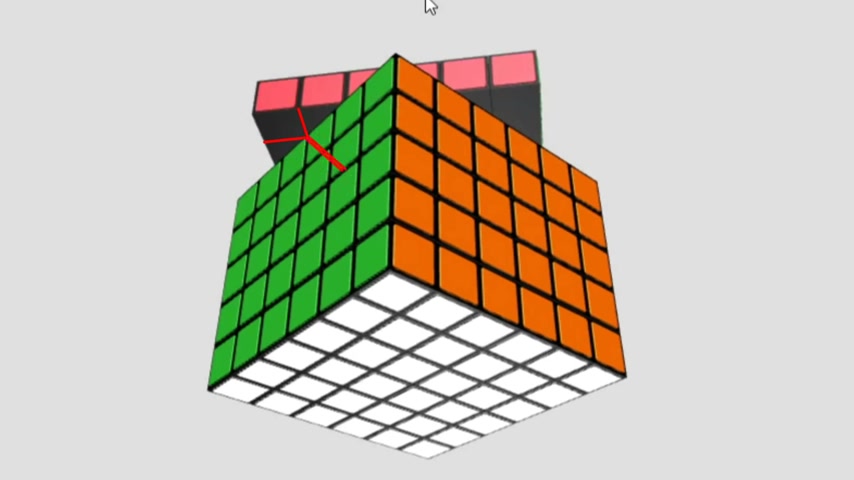
So if I have another edge piece here , then it can sit like this and it prevents the corner from popping out the way the six by six looks here , you'd have to build it with the really thin leg for the corner piece .
And I mean extreme thin , not only with the small amount of space have to fit the leg , but this piece below it also has some thickness to it .
With this in mind , there is basically no room at all for this mechanism to work .
At least not without breaking on a seven by seven .
This design would be literally impossible on a six by six .
It's just not feasible but on anything smaller , the design works just fine as there is plenty of room for the corner leg to fit .
So how can a real six by six exist ?
Well , do you see it ?
It's actually just one simple change .
It's only the outer layer that is not big enough .
So you can just make it bigger and keep all the other layers small .
That way the corner piece doesn't entirely stick off the puzzle when turning and the cube can still be held together and you can sort of see it on this cube even though it's a bit of a subtle difference between the layer sizes .
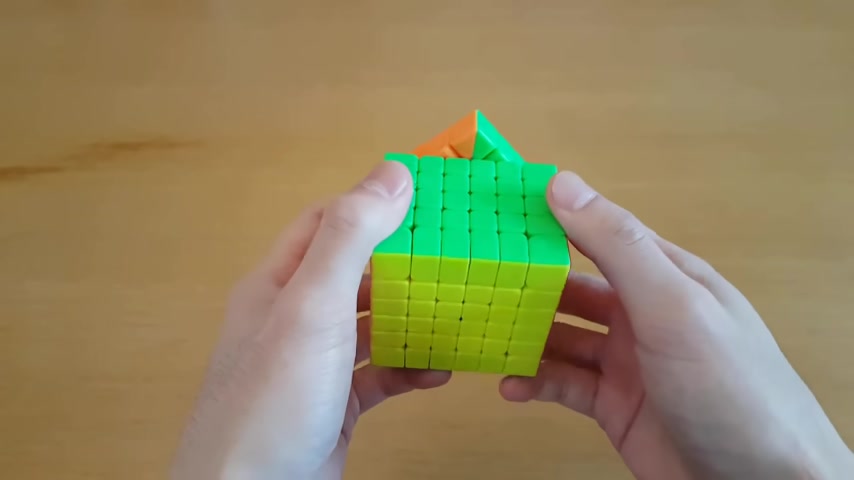
When you make a 45 degree turn , there is plenty of room for the corner piece to stay attached .
And this difference is much more apparent on something like a seven by seven or even something bigger like a 10 by 10 .
So it is definitely possible to build a six by six Rubik's cube .
But the one you see here , which is fully proportional is not exactly realistic .
OK .
Wait , there is another problem for a three by three cube .
The way it's all held together is that there is a core , the core is made up of all the centerpieces , the edge pieces which have two colors are held together by going between two centerpieces .
And once you have multiple edge pieces in there , then you can insert a corner piece in between the edge pieces like that .
This idea of a core edges and things between them only works with an odd numbered cube because there's a layer in the middle for there to be a core .
The five by five cube actually works the same way just with more pieces .
But on an even numbered cube , things are a bit different .
There's no middle layer for there to be a core .
So instead there's a core on the inside .
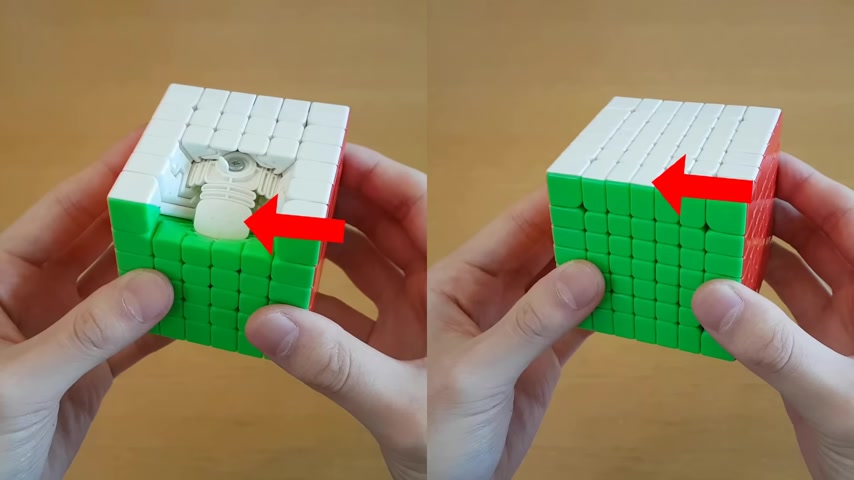
Now , I'll have to show you the inside of a four by four to explain what makes it so difficult .
On a six by six inside a four by four , there are actually more pieces where if you're just normally solving , you would never see them .
There's this piece right here which goes between the wing pieces .
There's this one right here which goes between center pieces and there is this centerpiece .
Now , if you compare that to a five by five , those are the same pieces , a four by four and a five by five have the same number of pieces or in other words , a four by four is a five by five .
But you cannot see the middle layers , they are just hidden away on the inside , but they are still there .
And on a six by six , it's the same idea .
The middle layer of a seven by seven is actually just on the inside of the six by six as different shaped pieces , but still the same pieces .
So if you wanted to make a six by six , you would need as many pieces as a seven by seven and then hide a bunch of those pieces .
And remember if you're inventing this for the first time , a seven by seven has not even been invented yet .
And that's not even the end of it .
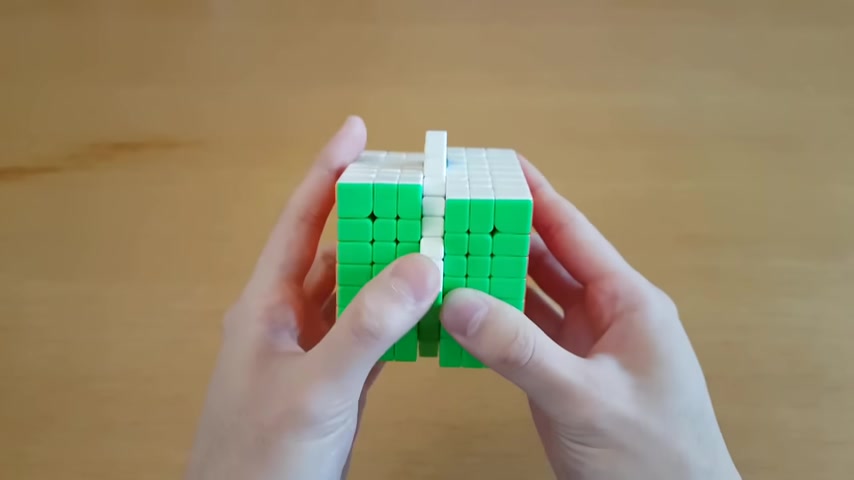
So imagine you had just designed a seven by seven with the middle layer and everything .
So now you can take this design and move it to a six by six just by using the same design .
But hiding the middle layer on the inside of the cube .
Is there any issue with this design ?
The answer of course is yes .
The reason is because this middle layer is still there even in the six by six , which means if it gets misaligned like this , then the cube doesn't turn anymore on the V cube six .
This was actually a real problem and I can reproduce it right now .
So this is the inner layer here that should be part of seven by seven .
And as I turn , you can see that this screw stays with one of the layers , it stays with the one on the right .
But if I hold the screw in place and turn like that , now you can see it's out of place , the screw is supposed to be in the middle , but it's actually over here now .
And this is the same as having a seven by seven inner layer slightly turned like that .
So clearly , I won't be able to turn sideways anymore .
So we can try that .
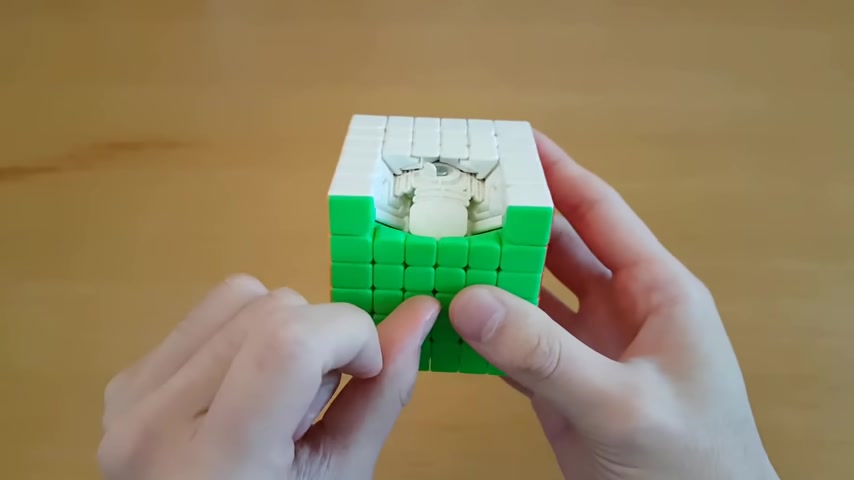
The cube no longer turns .
And if I don't know the issue , then how am I supposed to fix it ?
Everything looks fine .
It just doesn't turn .
There's actually a snapping mechanism on the inside that allows the center to snap onto either of the sides .
So I'm just gonna turn along this axis a little bit because I can still turn this way until it snaps .
And now you can see the center is back in place .
However , even with that snapping mechanism , this internal misalignment issue was very common on the B cube six .
And with modern six by six design , the snapping mechanism is much better .
But you can see with this little bump right here , this bump makes it so that if you only try to turn these layers here , which remember is like the middle layer of a seven by seven , then it would start to turn all the other layers as well because it's going to run into the other pieces .
So it's impossible to only turn the middle layer .
It must stay attached to at least one of the sides .
In this case , it's going to stay attached to the left side because the bump will run into the pieces on the left side .
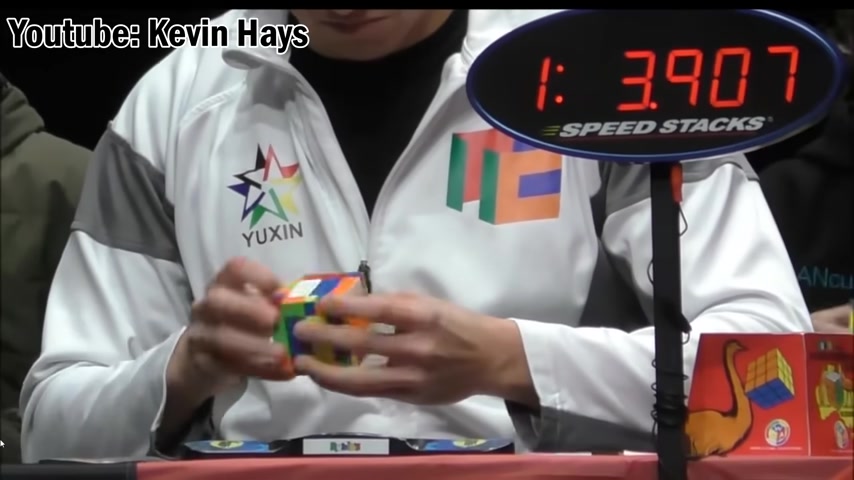
And so they will all move together despite all these challenges that needed to be overcome in order to create the first six by six VQ came through .
Although compared to the best six by sixes from today , you would say that it's too loud , it's a bit too big .
It's hard to turn , it can lock up , it's too heavy and it has a high risk of pops .
That's just a testament to how far cube hardware has come along since then .
Nowadays , turning on a six by six is more limited by your ability than by the cube , which is just unbelievable considering where it all started .
And you can even see this in the six by six world records over time .
The six by six solving method is actually quite simple and hasn't changed much over the decade .
But the world record has improved drastically from over three minutes down to only one minute .
Obviously , this is not just the cube hardware but also some amazingly hard working and talented individuals who have practiced for years to set those records .
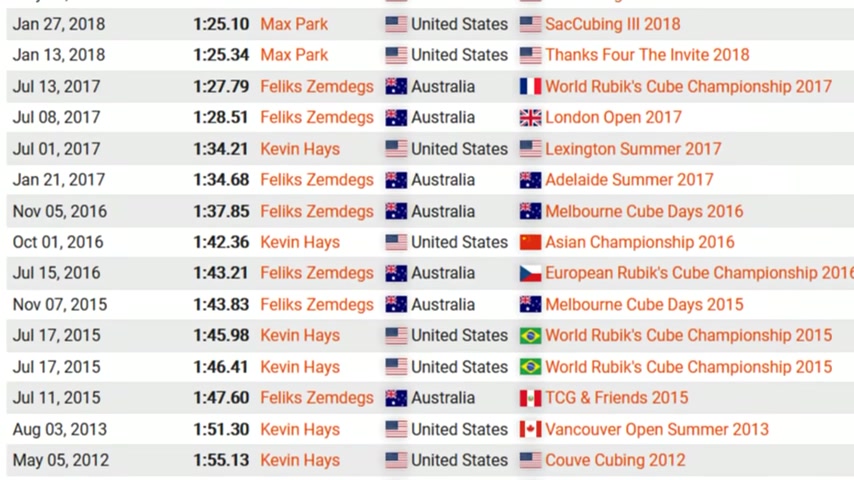
But without all these advancements in cube hardware , these times would simply not be possible .
So if you want to try an amazing six by six for just $25 then you can get the YGMGC from speedups shop dot com , use the discount code J perm .
But even though speed keeping hardware has come , this far I still get ads for VCU .
Are you looking for a way to reach a wider audience and get more views on your videos?
Our innovative video to text transcribing service can help you do just that.
We provide accurate transcriptions of your videos along with visual content that will help you attract new viewers and keep them engaged. Plus, our data analytics and ad campaign tools can help you monetize your content and maximize your revenue.
Let's partner up and take your video content to the next level!
Contact us today to learn more.